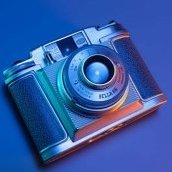
kirkt
-
Posts
440 -
Joined
-
Last visited
Reputation Activity
-
 kirkt reacted to James Ritson in Affinity Photo Customer Beta (1.5 - RC1)
kirkt reacted to James Ritson in Affinity Photo Customer Beta (1.5 - RC1)
Hey all, I have stealth-edited ( :ph34r:) Andy's initial post to include links to 32 video tutorials covering the new features. These videos are currently unlisted, and will become public when 1.5 is officially released. For now, though, I hope they help with understanding some of 1.5's new functionality, and I will of course continue to add more after 1.5's launch. Enjoy!
-
 kirkt reacted to Andy Somerfield in Affinity Photo Customer Beta (1.5.0 - Beta 11)
kirkt reacted to Andy Somerfield in Affinity Photo Customer Beta (1.5.0 - Beta 11)
Status: Beta Release
Purpose: Fixes, improvements
Requirements: Purchased Affinity Photo
Mac App Store: Not Submitted
Download: 1.5 Beta 11 Here
This is a beta of a substantial change to our codebase and as much as we have tried to ensure the quality of the code, it should be considered to be not suitable for production use. This means that you should not attempt to use it for commercial purposes or for any other activity in which you may be adversely affected by the application failing. In addition it is definitely worth noting that files created in Affinity Photo 1.5 cannot be opened in Photo 1.4 so always make a copy of your important documents before opening them in 1.5 to ensure you do not accidentally overwrite them and are unable to open them in your 1.4 version.
To use this beta, simply download the file from the link given above and double-click on the file to open the installer. Follow the instructions to install the beta version. The beta sits alongside the Mac App Store version and will not interfere with it.
It's also worth noting that this beta is completely file-format compatible with the recently released Affinity Designer 1.5.3 in the Mac App Store - although the above disclaimer still applies!
Improvements & Fixes
- New preferences options (under Colour) for handling of OpenEXR (separate alpha, post-divide alpha, perturb zero alpha).
- Layered OpenEXR files were coming in upside down (layer-wise). Fixed.
- OpenEXR import should default to a transparent background.
- Fixed big problems when trying to use any brush-based tool on more than one layer at once.
- Fixed clone tool hiding the source marker under while dragging.
- Information panel now shows alpha values.
- Fixed issues when importing TIFF with malformed DPI tag.
- Improved X3F focus-pixel removal for more modern cameras.
- General Tone Mapping stability improvements.
- Respect tone curve preference when doing HDR Merge, Focus Merge.
- Develop now properly respects user-chosen profile defaults.
- Focus and HDR merge now respects user-chosen profile defaults.
- Fixed further crash issues with the Font dropdown.
- Improvements to numerous filter which use Gaussian samplers.
- Fixed more issues with badly formed TIFF being loaded as RAW (sigh).
- Fixed importing of PSD gradient map adjustments.
- Alt-Click on the “Add mask” button in the layers panel to add an empty mask.
- Disabled buttons in Macro panel when no document is loaded.
- Fixed LZW decompression bugs when importing PDF.
- Fixed Lighting filter in CMYK.
- Fixed spurious history items when using freehand selection tool.
- Fixed magnetic selection bugs.
- Fixed redraw issues with freehand selection tool.
- Fixed weird 32bit bounding issues with Gaussian samplers.
- Improved panorama alignment.
- Numerous PSD import / export improvements.
- Gradient tool now works on 32bit masks.
- Show bad equations in red when using Equations filter (incomplete).
- Avoid crashes when “Resize Pixel Art Document” is used on massive documents.
- Improved macro panel icons.
- Ctrl-Alt drag in brush tools should be limited to 4096, not 1024.
- Fixed issues where Live Filter panel would not reflect opacity, blend mode correctly.
- The “red button” should never auto-commit filters.
- Fixed more white scroll bar bugs in macOS Sierra.
- OpenEXR can now be exported from non-32bit documents.
- Fixed terrible “Save with History” problems when user has deleted from a layer using a pixel selection (sorry!).
- Fixed crash in Apply Image when using equations in LAB format.
- Macro recorder can now record “Resize Document”.
- Numerous minor cosmetic improvements.
- Numerous other small stability improvements.
- Improved localisations.
- Improved help.
Unfortunately, the “Link Layers” feature has missed the cut - as has the “Pause Macro” feature. Apologies for this - we will try to get them into a beta as soon as possible after Photo 1.5 has shipped.
Photo will go to RC at the start of next week. We are still working on a number of bugs / improvements until then.
Thanks again for taking the time to use this beta!
Affinity Photo Team :ph34r:
-
 kirkt reacted to rui_mac in Affinity Photo Customer Beta (1.5.0 - Beta 9)
kirkt reacted to rui_mac in Affinity Photo Customer Beta (1.5.0 - Beta 9)
One of the most important things that I think that it should be added as soon as possible is a way to save expressions so that a user could create an expression library.
-
 kirkt reacted to Andy Somerfield in Affinity Photo Customer Beta (1.5.0 - Beta 9)
kirkt reacted to Andy Somerfield in Affinity Photo Customer Beta (1.5.0 - Beta 9)
rui_mac,
Many more functions are coming soon :) For now, use this hack:
idiv(x/10,1)
Here is a list of current functions:
"abs"
"idiv"
"irem"
"sq"
"sqrt"
"sin"
"cos"
"tan"
"min"
"max"
"mid"
"average"
"lerp"
"clamp"
Thanks,
Andy.
-
 kirkt reacted to Andy Somerfield in Affinity Photo Customer Beta (1.5 - Beta 7)
kirkt reacted to Andy Somerfield in Affinity Photo Customer Beta (1.5 - Beta 7)
kirkt,
Yes, here goes:
SR = Source Red
DR = Dest Red
SB = Source Blue
DB = Dest Blue
and so on..
You can use any of the channels anywhere, so for example,
DR = (SR+DR)*0.5
DG = 0
DB = SR
DA = 1
This would set the output red channel to the average of the source and dest red, set output green to 0, set the output blue channel to 0 and output alpha to 1.
You can use it to simply rearrange channels, or any other expression you desire - there are even things like power operators so for example -
DR = SR^2.2
DG = SG^2.2
DB = SB^2.2
.. would be an approximation of linearisation, etc.
And yes - the "Apply" button is broken - we are rebuilding Beta 7 with it fixed - I will advise when that is done :)
Thanks,
Andy.
-
 kirkt got a reaction from colorduels in Color Correction / Prepress missing tools
kirkt got a reaction from colorduels in Color Correction / Prepress missing tools
I would also like to see both of these important features implemented in AP, please! These are essential image manipulation tools for use in selections, masks and channel-based operations. The current "Apply Image" command is of little use compared to the "traditional" Apply Image command referenced by Davide.
Thank you for your tireless development of AP.
kirk
-
 kirkt reacted to Davide.Barranca in Color Correction / Prepress missing tools
kirkt reacted to Davide.Barranca in Color Correction / Prepress missing tools
Hi,
on a regular basis I check Affinity Photo to asses how close it has become to a viable alternative for Color Correction / Prepress production jobs. People in this business (including friends and colleagues of mine, worldwide) tend to use an established set of techniques, which in turn require tools – not many, to tell the truth: we could be using Photoshop CS4 and do 99% of what's needed to get the job done.
FYI, what would make legions to operators switch to AP (but AP still misses) in my opinion are:
1. A proper set of Channel Blending tools, namely: Apply Image working on the open image's own channels: e.g. apply the Red to the Green, Lighten mode, 50% opacity. We use Channel Blending on ~80% of all images we work on. Calculations is handy too, but Apply Image would be OK.
2. A proper automation system: Macros are the first step, scripting is the second (I know there already are topics on this so I'll just mention it). Production doesn't only mean batch processing, but also dedicated script that can automate hundreds of steps based on each image's features.
The two above are, I would say, mandatory for people in my business. Which includes also savvy retouchers. A delightful extra, instead, as follows.
The AP team already gifted us with a true gem: Curves in RGB, Lab and CMYK – at the same time. What would obviously follow (at least for a color correction twisted mind) is a Channel Palette displaying at the same time R, G, B, C, M, Y, K, L, a, b, 10 channels. This, combined with Apply Image working on channels would make us drool and set on fire existing subscriptions.
I'm sure the engineering team has its own, well defined, priorities: my intention is to put to your attention what are the needs of some professionals in the imaging business.
Thanks for your attention and best regards,
Davide Barranca
-
 kirkt got a reaction from A_B_C in I am soooo frustrated with this 'soft proofing' and NO ONE helping! Sure, I have used soft proofing
kirkt got a reaction from A_B_C in I am soooo frustrated with this 'soft proofing' and NO ONE helping! Sure, I have used soft proofing
Elaborating a little on the soft-proof adjustment layer and the flatten operation in the history of the screen shot in post #20:
In AP, soft-proofing as an adjustment layer apparently has the power to change the actual RGB pixel values in your document. That is, the appearance of the image when viewed with a soft proof adjustment layer changes because the adjustment layer changes the pixel values of the composite image (layer stack). This is distinctly different than soft proofing in PS, where the appearance of the image on screen changes, but the RGB values of the actual document do not change. The critical thing to realize here is that if you flatten your layer stack with the Soft Proof adjustment layer enabled you are burning that soft proof change INTO THE RGB values of your document! It now becomes a permanent change. THIS IS NOT GOOD! Soft Proofing should be a simulation of the output device, not a permanent edit to your RGB data. Soft proofing with an adjustment layer should be done with the understanding that the soft proofing adjustment simulates the output device so that you can add, say, a curves adjustment to compensate for a slight loss of contrast due to the printer. So, you add the soft proof layer to simulate the output for your printer-paper combination, then you tweak the image to compensate for the output device. Then you DISABLE the soft proof layer and save your adjusted file for output to the specific device you simulated with the soft proof.
In PS, you enable soft-proofing and do the same thing - you choose your output profile to simulate the output device, add a curve, or whatever, to compensate for specifics of the printer-paper combination and save your file for output. Because soft-proofing in PS occurs at the display level, it does not alter the actual RGB values of your document, so there is no need to disable soft proofing to save your tweaked file.
This is really important and I was not really aware that the AP soft-proofing adjustment layer could actually be applied as a destructive change to your layer stack and the RGB values in the document.
So, if you use the soft-proofing adjustment layer to simulate your printer for final tweaking to output, make sure you disable the soft-proof layer when you save your final output - otherwise the soft-proof "adjustment" will get burned into the document (EDIT: Maybe?).
Someone who is more familiar with soft-proofing in AP, please correct me if my observations are off the mark.
Kirk
-
 kirkt got a reaction from A_B_C in I am soooo frustrated with this 'soft proofing' and NO ONE helping! Sure, I have used soft proofing
kirkt got a reaction from A_B_C in I am soooo frustrated with this 'soft proofing' and NO ONE helping! Sure, I have used soft proofing
I was looking at your first screenshot in post #14 - that shows the soft proof adjustment layer dialog with Abs Col. selected.
Because you are using a custom printer-paper profile (and display profile), I am interested to know:
1) Is it ICC version 2 or version 4. Some applications do not support version 4.
2) If you use an Epson printer-paper profile, do you have this problem.
And I also want to make sure that I am fully understanding the issue - the comparisons that you have demonstrated here (for example, showing the rendering of the soft-proof image in AP versus PS) are with both images rendered in soft-proofing mode, with the same rendering intent selected, etc. in each application.
In the above screen shot (post #20) you appear to be comparing PS to AP. The HISTORY panel in AP appears to show that you opened the document, added a soft proof layer with some selected adjustment to the soft proof layer, then you FLATTENED the document, burning the soft proof appearance into the document. Then you added a curves layer, etc.
At this point, I am not sure we are comparing apples to apples.
Try this:
Exercise A
1) Open the RPP TIFF in AP and PS. Make no adjustments, etc. just open the image. Make sure AP and PS are both set up to use BetaRGB as the working space, and confirm that the opened image is in BetaRGB.
2) In AP, add a soft proof adjustment layer and select a canned Epson printer-paper profile (i.e., not one of your custom profiles) to display as the soft proof, with your preferred rendering intent. Enable BPC (black point compensation).
3) In PS, choose "View > Proof Setup > Custom..." and chose to soft proof with the exact same canned Epson profile you applied in (2) with the same rendering intent as in (2) and with BPC and "Simulate Paper Color" enabled.
Now compare the two images.
Exercise B
Repeat Exercise A, but with your custom printer-paper profile applied as the soft proofing profile in both AP and PS. You may have to re-apply/activate the specific rendering intent, BPC and Simulate Paper Color.
Compare the two images.
Questions:
1) In Exercise A, do the AP and PS images appear different?
2) In Exercise B, do the AP and PS images appear different? Do the Exercise B images appear different than the exercise A images?
Let us know how it goes.
kirk
-
 kirkt got a reaction from anon1 in combining L,R, G,B monochrome images
kirkt got a reaction from anon1 in combining L,R, G,B monochrome images
But, once you open your grayscale image, you have to make it a COLOR image (Document > Color Format RGB (16bit)) THEN you can assign a color profile. I was not sure you were in color mode.
kirk
-
 kirkt reacted to R C-R in I am soooo frustrated with this 'soft proofing' and NO ONE helping! Sure, I have used soft proofing
kirkt reacted to R C-R in I am soooo frustrated with this 'soft proofing' and NO ONE helping! Sure, I have used soft proofing
I have wondered about that too. From what I can tell, the soft proof list includes all the ICC profiles in:
• /System/Library/ColorSync/Profiles/
• /System/Library/CoreServices/Resources/Profiles/
• /System/Library/Frameworks/ICADevices.framework/ (Possibly only has the "Camera RGB Profile" file for a built-in camera)
It includes those in /Library/Printers/ but only for the printers that show up in System Preferences > Printers & Scanners, what appears in ColorSync Utility's Devices tab as "Registered ColorSync Devices" in the Printers section.
It includes those in the top level of /Applications/Affinity Photo.app/Contents/Resources/ but not those in its subfolders like/etc/colour/.
There may be others but it is confusing, in part because the same profile like AdobeRGB1998 are in more than one of these locations, so I don't know which one Affinity uses.
Assign & Convert only include a small subset of these. I'm still trying to figure out why.
-
 kirkt reacted to csp in I am soooo frustrated with this 'soft proofing' and NO ONE helping! Sure, I have used soft proofing
kirkt reacted to csp in I am soooo frustrated with this 'soft proofing' and NO ONE helping! Sure, I have used soft proofing
after reading this post i have the suspicion that the problem you face is related to a bug that seems was never fixed - AP can not handle a dual monitor setup correct. i assume you use AP on the external display. so try this: open sys pref go to the monitor pref tab where you can see and arrange both monitors. move the little white bar on top of the macbook screen to you pa272 monitor. restart AP now.
-
 kirkt reacted to MEB in I am soooo frustrated with this 'soft proofing' and NO ONE helping! Sure, I have used soft proofing
kirkt reacted to MEB in I am soooo frustrated with this 'soft proofing' and NO ONE helping! Sure, I have used soft proofing
Thank you kirkt, csp and all involved,
The Soft Proof shouldn't change the image in any way on export as stated in the Help.
I've logged this to be looked at.
-
 kirkt got a reaction from MEB in I am soooo frustrated with this 'soft proofing' and NO ONE helping! Sure, I have used soft proofing
kirkt got a reaction from MEB in I am soooo frustrated with this 'soft proofing' and NO ONE helping! Sure, I have used soft proofing
Elaborating a little on the soft-proof adjustment layer and the flatten operation in the history of the screen shot in post #20:
In AP, soft-proofing as an adjustment layer apparently has the power to change the actual RGB pixel values in your document. That is, the appearance of the image when viewed with a soft proof adjustment layer changes because the adjustment layer changes the pixel values of the composite image (layer stack). This is distinctly different than soft proofing in PS, where the appearance of the image on screen changes, but the RGB values of the actual document do not change. The critical thing to realize here is that if you flatten your layer stack with the Soft Proof adjustment layer enabled you are burning that soft proof change INTO THE RGB values of your document! It now becomes a permanent change. THIS IS NOT GOOD! Soft Proofing should be a simulation of the output device, not a permanent edit to your RGB data. Soft proofing with an adjustment layer should be done with the understanding that the soft proofing adjustment simulates the output device so that you can add, say, a curves adjustment to compensate for a slight loss of contrast due to the printer. So, you add the soft proof layer to simulate the output for your printer-paper combination, then you tweak the image to compensate for the output device. Then you DISABLE the soft proof layer and save your adjusted file for output to the specific device you simulated with the soft proof.
In PS, you enable soft-proofing and do the same thing - you choose your output profile to simulate the output device, add a curve, or whatever, to compensate for specifics of the printer-paper combination and save your file for output. Because soft-proofing in PS occurs at the display level, it does not alter the actual RGB values of your document, so there is no need to disable soft proofing to save your tweaked file.
This is really important and I was not really aware that the AP soft-proofing adjustment layer could actually be applied as a destructive change to your layer stack and the RGB values in the document.
So, if you use the soft-proofing adjustment layer to simulate your printer for final tweaking to output, make sure you disable the soft-proof layer when you save your final output - otherwise the soft-proof "adjustment" will get burned into the document (EDIT: Maybe?).
Someone who is more familiar with soft-proofing in AP, please correct me if my observations are off the mark.
Kirk
-
 kirkt got a reaction from My Strawberry Monkey in I am soooo frustrated with this 'soft proofing' and NO ONE helping! Sure, I have used soft proofing
kirkt got a reaction from My Strawberry Monkey in I am soooo frustrated with this 'soft proofing' and NO ONE helping! Sure, I have used soft proofing
Elaborating a little on the soft-proof adjustment layer and the flatten operation in the history of the screen shot in post #20:
In AP, soft-proofing as an adjustment layer apparently has the power to change the actual RGB pixel values in your document. That is, the appearance of the image when viewed with a soft proof adjustment layer changes because the adjustment layer changes the pixel values of the composite image (layer stack). This is distinctly different than soft proofing in PS, where the appearance of the image on screen changes, but the RGB values of the actual document do not change. The critical thing to realize here is that if you flatten your layer stack with the Soft Proof adjustment layer enabled you are burning that soft proof change INTO THE RGB values of your document! It now becomes a permanent change. THIS IS NOT GOOD! Soft Proofing should be a simulation of the output device, not a permanent edit to your RGB data. Soft proofing with an adjustment layer should be done with the understanding that the soft proofing adjustment simulates the output device so that you can add, say, a curves adjustment to compensate for a slight loss of contrast due to the printer. So, you add the soft proof layer to simulate the output for your printer-paper combination, then you tweak the image to compensate for the output device. Then you DISABLE the soft proof layer and save your adjusted file for output to the specific device you simulated with the soft proof.
In PS, you enable soft-proofing and do the same thing - you choose your output profile to simulate the output device, add a curve, or whatever, to compensate for specifics of the printer-paper combination and save your file for output. Because soft-proofing in PS occurs at the display level, it does not alter the actual RGB values of your document, so there is no need to disable soft proofing to save your tweaked file.
This is really important and I was not really aware that the AP soft-proofing adjustment layer could actually be applied as a destructive change to your layer stack and the RGB values in the document.
So, if you use the soft-proofing adjustment layer to simulate your printer for final tweaking to output, make sure you disable the soft-proof layer when you save your final output - otherwise the soft-proof "adjustment" will get burned into the document (EDIT: Maybe?).
Someone who is more familiar with soft-proofing in AP, please correct me if my observations are off the mark.
Kirk
-
 kirkt got a reaction from anon1 in I am soooo frustrated with this 'soft proofing' and NO ONE helping! Sure, I have used soft proofing
kirkt got a reaction from anon1 in I am soooo frustrated with this 'soft proofing' and NO ONE helping! Sure, I have used soft proofing
Elaborating a little on the soft-proof adjustment layer and the flatten operation in the history of the screen shot in post #20:
In AP, soft-proofing as an adjustment layer apparently has the power to change the actual RGB pixel values in your document. That is, the appearance of the image when viewed with a soft proof adjustment layer changes because the adjustment layer changes the pixel values of the composite image (layer stack). This is distinctly different than soft proofing in PS, where the appearance of the image on screen changes, but the RGB values of the actual document do not change. The critical thing to realize here is that if you flatten your layer stack with the Soft Proof adjustment layer enabled you are burning that soft proof change INTO THE RGB values of your document! It now becomes a permanent change. THIS IS NOT GOOD! Soft Proofing should be a simulation of the output device, not a permanent edit to your RGB data. Soft proofing with an adjustment layer should be done with the understanding that the soft proofing adjustment simulates the output device so that you can add, say, a curves adjustment to compensate for a slight loss of contrast due to the printer. So, you add the soft proof layer to simulate the output for your printer-paper combination, then you tweak the image to compensate for the output device. Then you DISABLE the soft proof layer and save your adjusted file for output to the specific device you simulated with the soft proof.
In PS, you enable soft-proofing and do the same thing - you choose your output profile to simulate the output device, add a curve, or whatever, to compensate for specifics of the printer-paper combination and save your file for output. Because soft-proofing in PS occurs at the display level, it does not alter the actual RGB values of your document, so there is no need to disable soft proofing to save your tweaked file.
This is really important and I was not really aware that the AP soft-proofing adjustment layer could actually be applied as a destructive change to your layer stack and the RGB values in the document.
So, if you use the soft-proofing adjustment layer to simulate your printer for final tweaking to output, make sure you disable the soft-proof layer when you save your final output - otherwise the soft-proof "adjustment" will get burned into the document (EDIT: Maybe?).
Someone who is more familiar with soft-proofing in AP, please correct me if my observations are off the mark.
Kirk
-
 kirkt got a reaction from csp in RAW conversions?
kirkt got a reaction from csp in RAW conversions?
The Develop persona in AP does not make destructive adjustments to your raw file. It pretty much operates the same way that the Adobe Camera Raw plug-in in Photoshop works (a bunch of parametric sliders with local adjustment tools). I cannot imagine it would be that difficult to implement an XML or JSON sidecar file export in the AP developer interface to preserve a set of adjustments. That sidecar could sit next to your raw file and would not increase the file size, just like ACR.
There are a couple of open raw decoding libraries that are available and can be tailored to your specific needs and include several demosaic algorithms, etc. - dcraw and libraw come to mind - I don't think the whole process of raw development has to be reinvented, just implemented in a high-quality, fast and efficient way. I would think there is a population of folks out there that would not agree that Adobe offers the best image quality in terms of their raw conversion.
kirk
-
 kirkt reacted to robertochaves in Export 3D LUT questions
kirkt reacted to robertochaves in Export 3D LUT questions
Thank you Kirk!
I'm trying it out right now and converting it to a Color Finale ....
And the verdict... It worked!
Strange, here I thought that the .cube format was a standard file format....
In the list I see about 17 different types of .cube formats... what is the matter, why can't people create one standard for such a simple thing..
Anyway, thank you both for your prompt replies and help!
-
 kirkt got a reaction from robertochaves in Export 3D LUT questions
kirkt got a reaction from robertochaves in Export 3D LUT questions
In case you need it, here is an online set of utilities to plot and convert LUTs from one format to another:
http://www.vision-color.com/lutconverter/
kirk
-
 kirkt got a reaction from Elf in Photoshop Plug-In filters don't work.
kirkt got a reaction from Elf in Photoshop Plug-In filters don't work.
I have also found that DXO plug-ins (Film Pack5, Viewpoint 2) and MacPhun plug-ins (Intensify, Tonality, etc.) do not as of yet.
kirk







